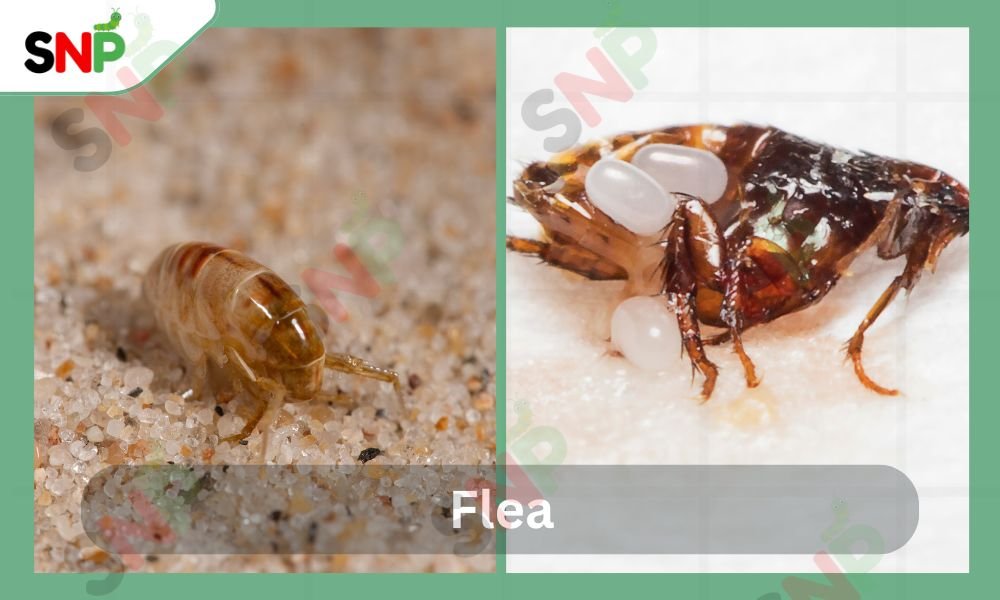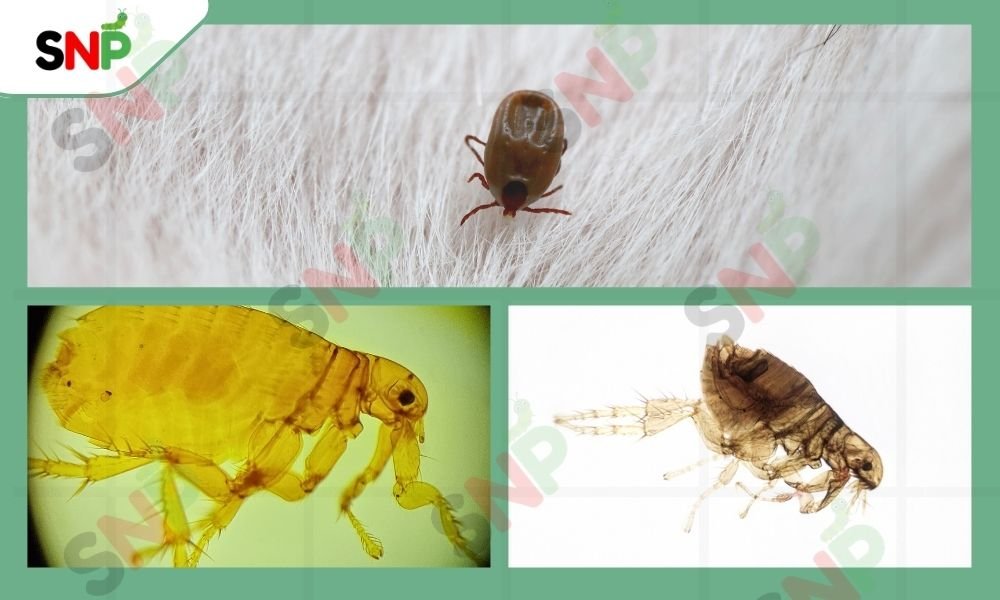Flea Larvae: Discover How to Eliminate Them

Fleas are a huge problem in a pet owner’s life and learning about flea lifecycle could result in more efficiency in controlling the infestation. The most underrated but vital phase of flea’s life is the flea larvae stage. These freshly hatched creatures are a secret weapon in any infestation.
Summary
We are going to unfold the meaning of flea larvae, the role they play in the life cycle of the flea, how one can recognize them, and most importantly, how to get rid of them.
Flea Life Cycle

Fleas know how to multiply fast! It’s important to know how they grow. They go through four stages namely- egg, larva, pupa, and adult.
1. Egg Stage- A grown-up female flea lays her eggs on animals (dog or a cat). But the eggs don’t stay there long, they fall off into places like your carpets, beds, and floors. One flea can lay hundreds of eggs a month, which is how an infestation can start fast.
2. The eggs transform into a worm- like larvae during the larva stage which occurs within one week or less. These creatures lack both legs and eyesight while hiding in dark spaces such as floor cracks and deep carpet areas. These creatures consume dried skin together with dirt and small food particles.
3. The larva develops into a pupa by creating a cocoon- The pupal stage represents the most challenging period to handle. The cocoon stage can last from days to weeks to months as the insect waits for the right time to emerge (such as sensing movement or heat).
4. Adult fleas emerge from their cocoon as mature insects- It immediately seek out pets or people to bite.
Your flea control efforts will be ineffective if you target only adult fleas because eggs and larvae and cocoons remain hidden inside your home. Flea problems persist because you need to treat all life stages simultaneously to prevent them.
Flea Larvae
When the adult fleas lay eggs, the flea larvae are the next step of the flea life cycle, being the second stage. What sets apart this phase from adult fleas is that flea larvae do not suck blood. Instead, they survive by eating organic debris, especially “flea dirt,” which in fact, are the feces of adult fleas and carry undigested blood. This stage is important because flea larvae are the make the most of their population, about 35%, and they can be really challenging to eliminate as they are hide in hard-to-reach places.
What Does Flea Larvae Look Like
Ascertaining the tiny flea larvae in a bunch of other adjacent small particles is a big puzzle, because both their size and behaviour are the main issues. Identifying them as small, whitish worms, measuring 2–5mm in length, is the process of finding them. The body of the flea larvae is transparent, and if they eat flea dirt, these darlings can become darker as the digested blood shows the darkness inside them. The body is still a little hairy and quite pale, and they will only be found deep in the carpets, pet bedding, or the cracks in furniture, and floors, where the light never comes and the larvae bury themselves.

Steps to Eliminate Flea Larvae from Your Home
On the premise of a multi-faceted strategy, you can effectively remove fleas in every stage of their life cycle. It explicitly explains how you can get the flea larvae out of your home through the steps below:
- Treat Your Pets: To start the process, use the veterinarian-prescribed flea treatment such as shampoos, spot-on treatments, or oral medications on your pets. Your pet’s fur must be cleaned of any fleas or dirt with a flea comb.
- Wash Bedding and Fabrics: In order to kill the flea larvae and eggs, wash pet beds, blankets, cushion covers, and your bedding in the hottest water possible and with a strong detergent.
- Vacuum Thoroughly: It is crucial to clean all things that cover the floor such as carpets, rugs, furniture, and even those hard corners and dark areas that are hard to access such as corners, cracks, and under the furniture. When done throughout an infestation, weekly vacuuming can reduce as much as 90% of the known sources of flea eggs and flea larvae.
- Use Insecticidal Sprays and Powders: Apply flea insecticides or insect growth regulators (IGRs) to carpets, upholstery, and pet areas. IGRs can stop flea larvae from growing by interrupting the life cycle of the latter.
- Use Natural Alternatives: Diatomaceous earth, a non-toxic alternative, can be sprinkled in parts with the flea problem, e.g. in carpets, under a pet’s bedding. This substance acts by the way that it dehydrates the insects.
- Declutter and Deep Clean: A clear space is a key point of getting rid of fleas. Flea eggs and larvae will be exterminated besides general housecleaning by doing such things as decluttering off old useless things, steam cleaning carpets.
Conclusion
From my point of view, you need to stick to regular steps in order to make sure that not only the adult fleas but also their eggs and larvae are completely eliminated. The treatment of flea larvae is the foundation of parasite control that will protect your pets and your dwelling from the further development of insects. Firstly, it is necessary to find and understand where flea larvae are and then focus on dealing with them, following this up by a word about the best ways to kill them.
Related Posts
How to Get Rid of Fleas Without Harming Pets
Fleas are small, fast, and harmful. If you have pets, and you want solutions to remove fleas, but you do not want to put your dog or cat in problems. This blog explains simple, safe tips that you can take at home and highlights pest control for fleas & discusses Dr Killigan’s natural products that […]
Flea and Tick Prevention for Homes with Pets
Fleas & ticks are small, but they can cause big problems for pets & people If you have cats or dogs, their safety needs to be sure by removing these pests. This blog will explain simple, safe tips U.S. pet owners can take to keep homes pest-free. Good pest control for fleas starts with understanding […]
Human Flea – Rare but Possible Infestations Explained
Most people, when the word fleas is mentioned, think of pets and not human beings. There is a kind of flea, known as the human flea, that could bite and cut people in most cases. In some cases in contemporary homes, these pests continue to manifest themselves in specific environments and may be a nuisance, […]
Quick Link
Services
